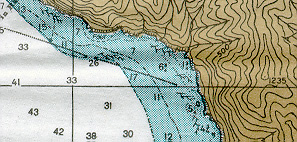travel
(vi) - to go from one place to another(vt) - to make a journey over or through
(n) - a traveling, a trip
How does the way in which words and images travel via spatial as opposed to temporal logic change the way in which we communicate?

Fredric Jameson claims that our postmodern culture has become "increasingly dominated by space and spatial logic" and that this has both raised questions of temporal organization and resulted in an ahistorical superficiality and flatness. Such a sense of the postmodern pastiche and fragmentation of self in the electronic era posits the individual subject as eternally bound to the surface of the present, unable to locate itself within a temporal, historic context.
In distinguishing between the ritual view and the transmission or transportation metaphor for communication, James Carey claims that our basic concept of communication remains grounded in the idea of transmission, "whereby messages are transmitted and distributed in space for the control of distance and people." Theorists such as Howard Besser and Steven Jones discuss the implications of the continued use of this transportation metaphor (the "Information Superhighway") for the Internet.
In both electronic and physical environments, space, time, and the body are given meaning through symbolic forms. On this notion of mapping meaning through language, or the way in which bodies move and write themselves into space, Mireille Rosello comments on Michel de Certeau's idea of the relationship between a walker (a traveler) of the city and her or his surrounding urban environment, and then relates the browser of an electronic text to a traveler who navigates the space not of a physical environment but of weightless information.
Returning to specifically textual spaces, we also see how electronic hypertext, and its tendencies towards fluidity, non-linearity, interactivity, and non-fixity, works to reconfigure the relationship between human body and textual body so that the reading experience is based on spatial, exploratory, and associational possibility rather than on a precoded, fixed linear hierarchy.
